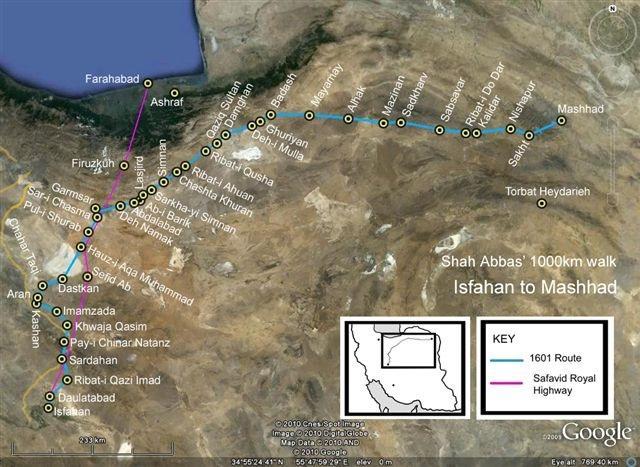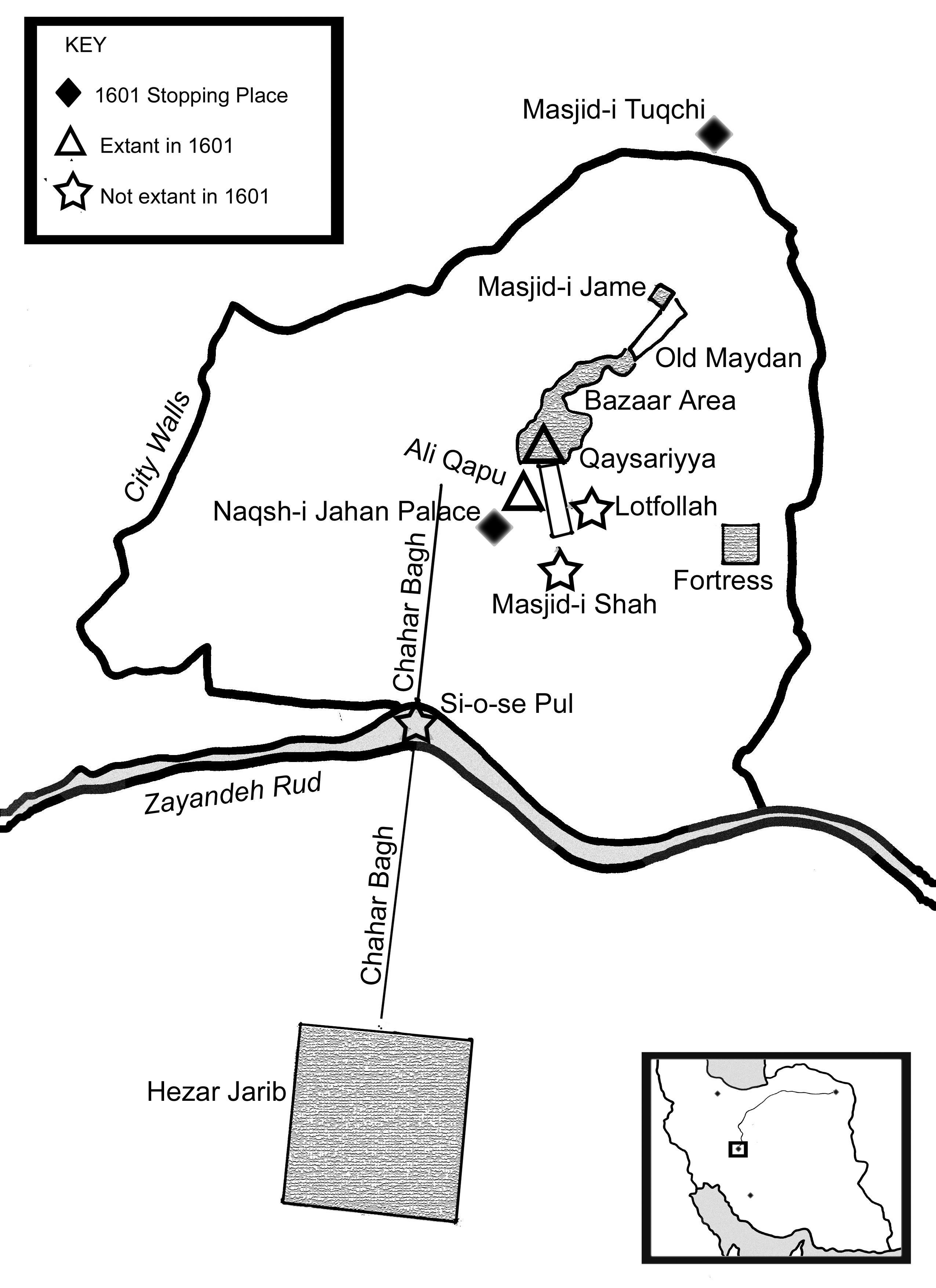Starting from Isfahan
In 1601, Shah Abbas the First started by walking northwards from his new and still only partly built capital, Isfahan, up towards the busy trading city of Kashan. A Polish carpet merchant, Sefer Muratowicz, had dinner with Shah Abbas the night before the thousand-kilometre walk started and reported: “Starting the next morning, having put on …


